 Edit article
Edit articleSeries
Edom’s Copper Mines in Timna: Their Significance in the 10th Century

“A Land Where You Can Dig Copper out of the Hills”
As part of his exhortation to keep God’s commandments, Moses waxes poetic about the great attributes of the land (Deut 8:6-9):
דברים ח:ז כִּי יְ-הוָה אֱלֹהֶיךָ מְבִיאֲךָ אֶל אֶרֶץ טוֹבָה אֶרֶץ נַחֲלֵי מָיִם עֲיָנֹת וּתְהֹמֹת יֹצְאִים בַּבִּקְעָה וּבָהָר. ח:חאֶרֶץ חִטָּה וּשְׂעֹרָה וְגֶפֶן וּתְאֵנָה וְרִמּוֹן אֶרֶץ זֵית שֶׁמֶן וּדְבָשׁ. ח:ט אֶרֶץ אֲשֶׁר לֹא בְמִסְכֵּנֻת תֹּאכַל בָּהּ לֶחֶם לֹא תֶחְסַר כֹּל בָּהּאֶרֶץ אֲשֶׁר אֲבָנֶיהָ בַרְזֶל וּמֵהֲרָרֶיהָ תַּחְצֹב נְחֹשֶׁת.
Deut 8:7 For YHWH your God is bringing you into a good land—a land with brooks, streams, and deep springs gushing out into the valleys and hills; 8:8 a land with wheat and barley, vines and fig trees, pomegranates, olive oil and honey; 8:9 a land where bread will not be scarce and you will lack nothing; a land where the rocks are iron and you can dig copper out of the hills.[1]
The final element Moses mentions here is the land’s being a source of iron and copper, two important metals in antiquity. While iron is rather abundant and can be found in many regions across Israel, copper is rare and its ore deposits are located only in the south, in the territory of Edom (yet still part of the Promised Land, cf., Exodus 23:31).[2]
Over the past century, archaeological study of the Timna Valley has shed light on the important place copper production held in the local economy of the southern Levant.
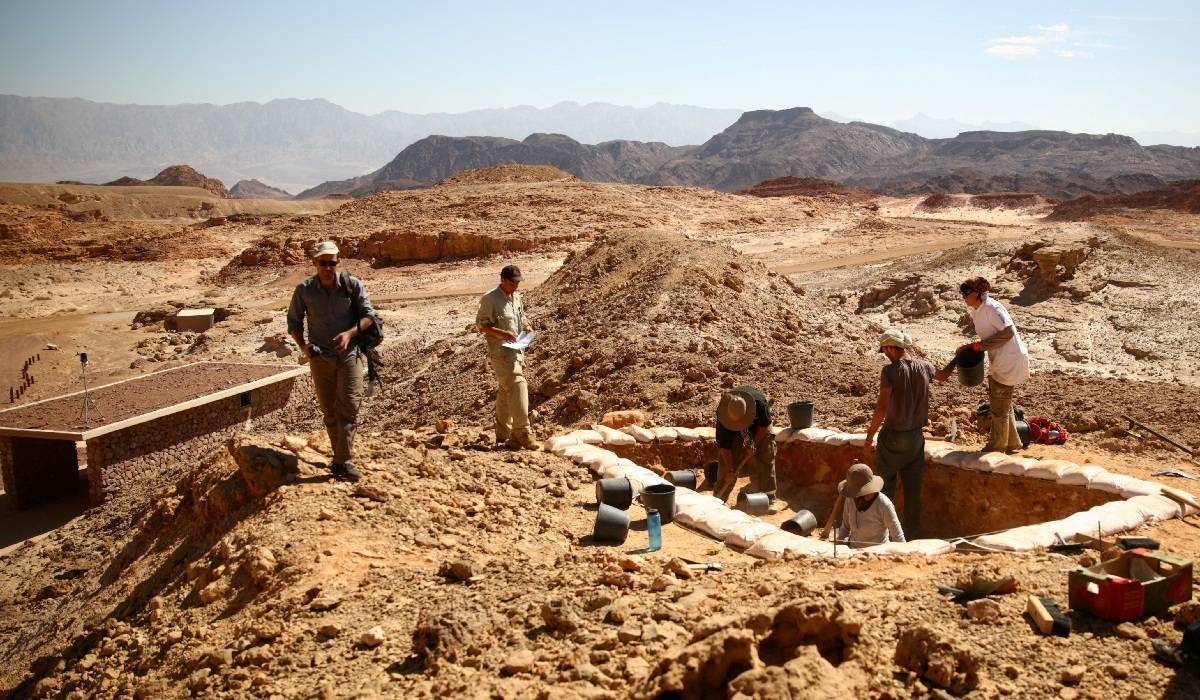
The Timna Valley
The Timna (תמנע) Valley,[3] located in the southern Aravah, on the western margin of the Dead Sea Rift Valley, holds one of the largest copper ore deposits in the southern Levant (second only to Wadi Faynan, located about 100 km to the north, in Jordan). The extensive archaeological study of Timna, which began over 50 years ago, has highlighted Timna as a key site for understanding ancient copper production technologies in the Near East and beyond.[4]
The finds include thousands of mining shafts[5] as well as copper smelting sites dating as far back as the Chalcolithic period, or 5th millennium B.C.E. Since then, the Valley has been exploited for its rich treasures by the Egyptians, Edomites, Nabateans, Romans, the Umayyad Caliphate, and the modern State of Israel.
Already in ancient times, to support this massive copper mining and smelting operation, which required numerous workers to spend weeks or months at a time in the middle of the desert, those in control of this operation needed to transport food, water, wood, and other equipment long distances through the unforgiving dry climate and into the Valley.
King Solomon’s Mines in Edom?
According to the biblical account, King Solomon, son of King David, was renowned for his fabled wisdom, power, and personal fortune, often described as one of the largest in the ancient world. But while Solomon’s famed wealth goes back to biblical times, the Bible never says anything about him having mines. This idea was first introduced in the late 19th century by author H. Rider Haggard (1856-1925) in his adventure novel,King Solomon’s Mines.
Haggard’s novel, which was a runaway bestseller, describes the adventures of Allan Quatermain, a British game hunter in Africa, who comes across a map that he believes will lead him and his companions to King Solomon’s ancient mines. The book’s publication was likely inspired by the wealth of archeological discoveries in the Middle East and Africa during that time, and it pioneered the genre of “lost world” adventure stories.
Khirbet en-Nahas (Glueck)
Haggard’s novel places the mines in Africa and imagines them filled with gold and precious gems, but in 1934, an American archaeologist and rabbi, Nelson Glueck (1900-1971) explored the Wadi Faynan region in Jordan and its enormous copper smelting site of Khirbat en-Nahas (Arabic for “The Ruins of Copper”). Based on pottery sherds, he dated this and other sites to the Iron Age (including those in the Timna Valley) and declared the Aravah to be the place of King Solomon’s “real” mines and one of the sources for his wealth.
Timna Valley – Egyptian Mines (Rothenberg)
Beginning in 1959, and continuing through the early 2000s, Beno Rothenberg (1914-2012), an archaeologist from Tel Aviv University and the University of London, excavated many copper production sites in the Timna Valley, south of Wadi Faynan. Although Rothenberg’s finds included some evidence of Iron Age activity, this was overshadowed by his discovery of the Egyptian Hathor temple and other Egyptian paraphernalia in the valley, which were considered by him as proof that the peak of the activity was orchestrated by the Egyptians during the Late Bronze Age (13th-12th century B.C.E).
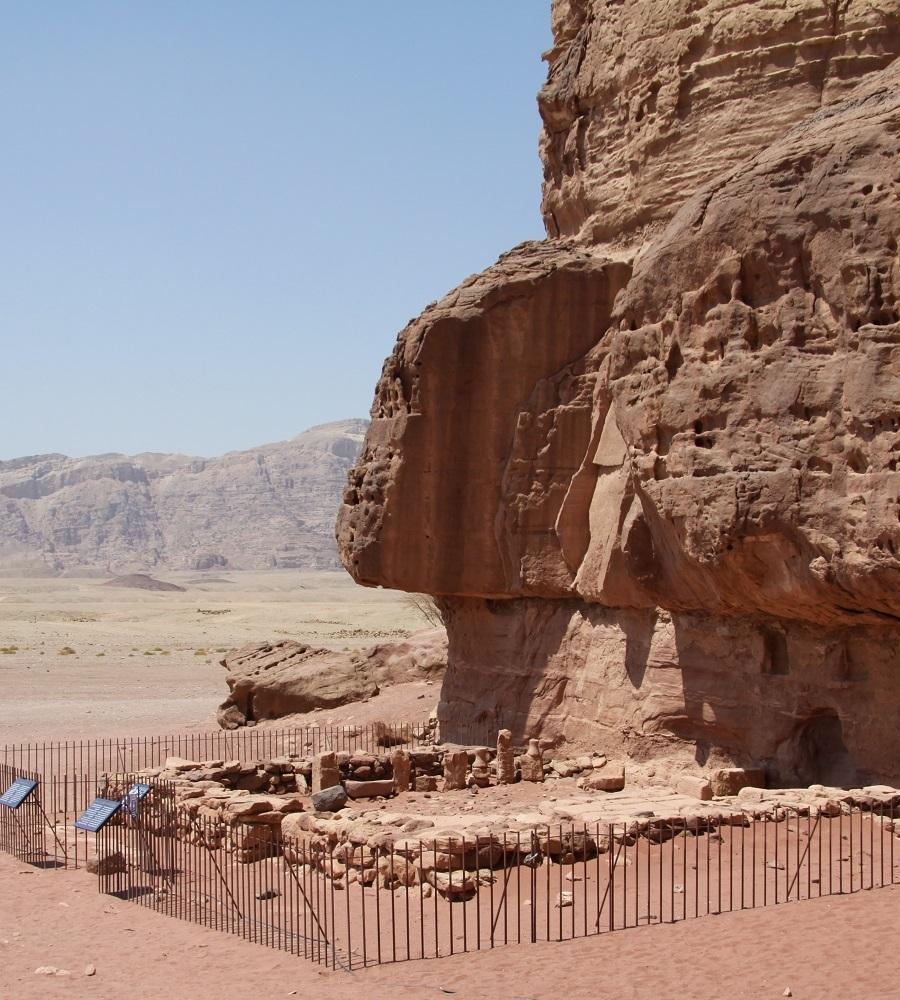 |
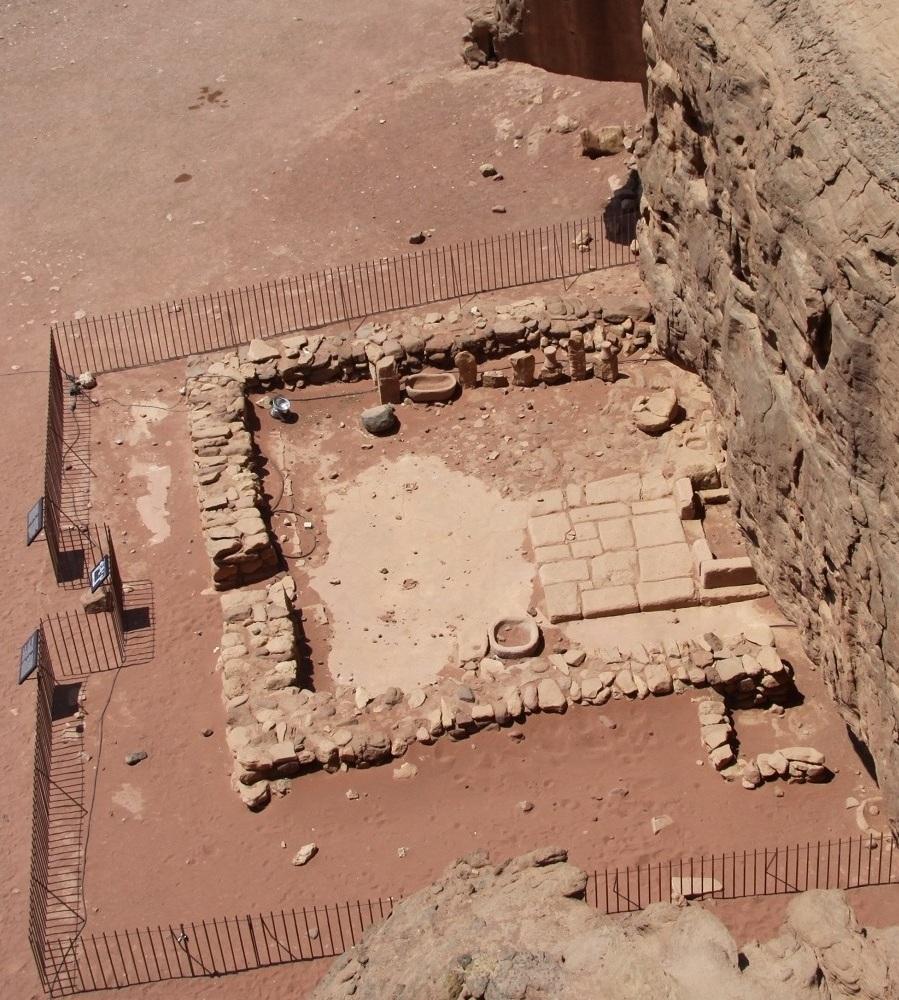 |
| The Egyptian Hathor temple, Timna. Wikimedia | |
He argued that the copper production ceased shortly after the Egyptian withdrawal from the region at the end of the period. After some high-publicity debates with Glueck and Albright, the new dating was, until recently, accepted by all. In fact, visitors to the park are welcomed today by two large Egyptian-style statues, reflective of Rothenberg’s view that these mines were primarily Egyptian.
Back to Solomon
A new archaeological expedition, led by one of the authors (Ben-Yosef) under the auspices of Tel Aviv University, commenced in 2012, and has been returning to the Central Timna Valley (CTV) every year since. The purpose of the expedition is to further investigate the copper production process, and to answer many unresolved chronological, social, and cultural questions. One of the main goals of the new CTV excavations is to better constrain the absolute date of copper production activities.
The new dig concentrated in a previously unexcavated site known as Slaves’ Hill (see below), and discovered evidence of dozens of the furnaces used to smelt copper as well as layers of copper slag, the main waste material of the smelting process. The final product of this and other smelting camps in the valley were ingots of relatively pure copper metal; these were used for making various tools (often by alloying with tin to produce bronze) and other objects (such as ornaments) in metallurgical workshops that were typically located within settlements.
Bronze continued to be the dominant metal for the production of weapons and agricultural implements well into the Iron Age. Even after iron became more common for certain artifacts during the 10th or 9th centuries B.C.E., the role of copper in the ancient economy of the region remained invaluable.
14Carbon and Archaeo-magnetic Dating: Iron Age
The rare arid conditions at Timna have resulted in unparalleled preservation of organic materials usually destroyed by the march of time: bones, seeds, fruits, and even fabric dating back thousands of years. This gives us a unique window into the culture and practices of a sophisticated ancient society, and indicates a highly developed, well-organized and centralized operation.
The results of several different types of tests conducted in recent years, including high resolution 14C dating and archaeo-magnetism from multiple slag mounds,[6] necessitated a revision in the dating suggested by Rothenberg and determined that the peak of activity at Timna took place during the early Iron Age, or 11th-9th centuries B.C.E.; the prior Late Bronze Age Egyptian-run smelting activities were on a much smaller scale than previously assumed.
These new dates fall squarely within the biblical timeframe for the United Monarchy, and indicate that the majority of the sites in the valley were not Egyptian.[7] The metallurgical activity discovered at Wadi Faynan in Jordan was similarly recently dated to the same period, hinting at an industrial and cultural link between these two early Iron Age sites.[8]
Excavating “Slaves’ Hill”
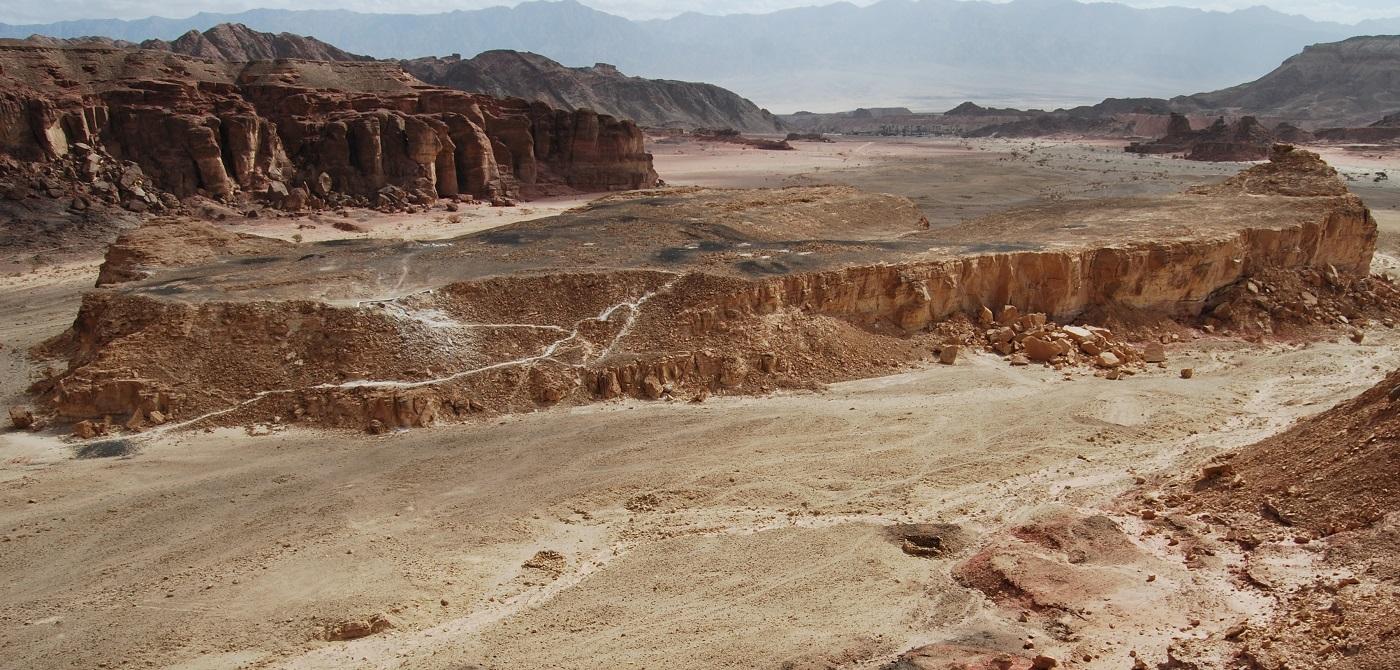
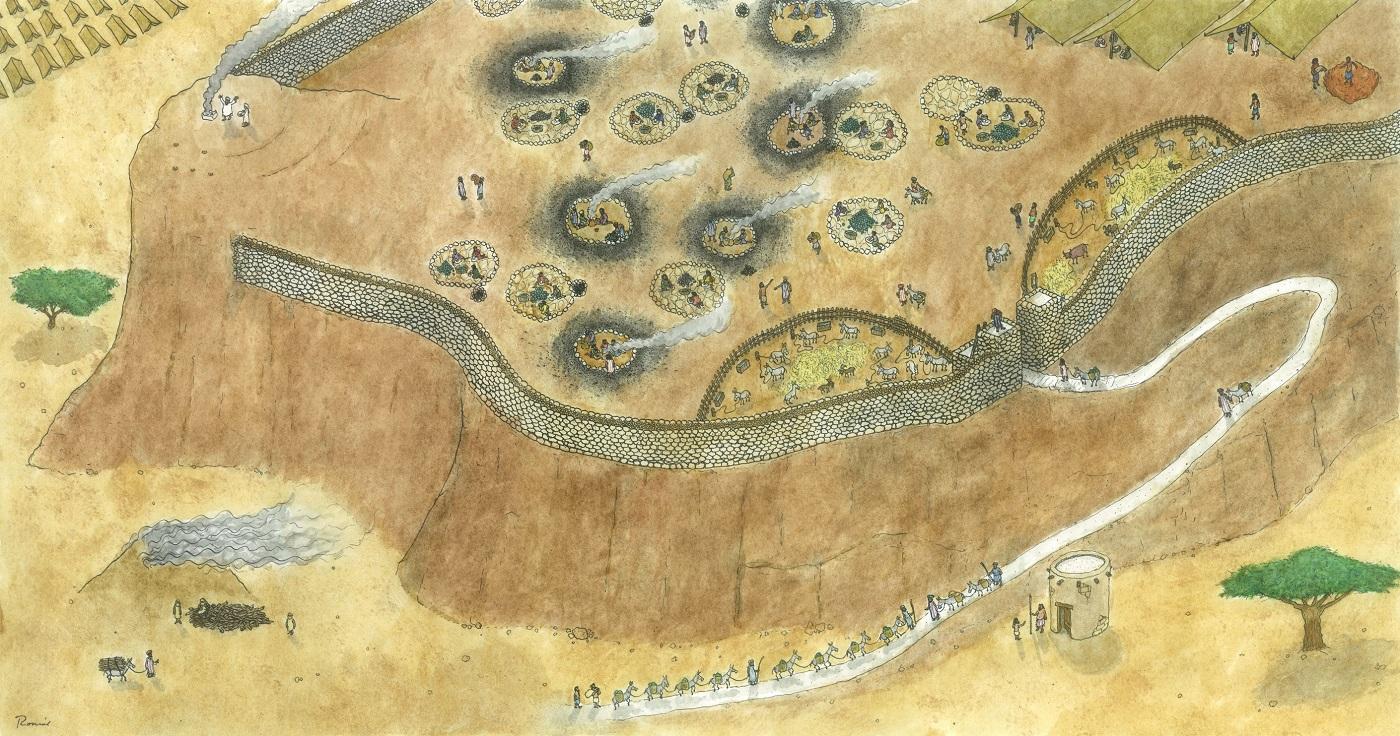
The isolated hilltop on which we concentrated our work (Site 34) – one of the largest copper production sites at Timna – was named “Slaves’ Hill” after Nelson Glueck’s (1935) description of the site as “a prison for forced labor.” This hilltop seemed to bear all the marks of an Iron Age slave camp — fiery furnaces, harsh desert conditions, and a massive barrier preventing escape.
Our discoveries have overturned this entire narrative: the people on the hill were part of the Edomite elite, as is clearly indicated by their food, clothing, and other belongings. This is not surprising, as in contrast to the mines, the metalworkers of Slaves’ Hill were responsible for one of the most advanced technologies of the time – the “High Tech” of the biblical period – and held the sophisticated knowledge of how to transform stone into metal.
Donkey Stables
The hilltop was surrounded by an advanced military fortification — a wall and a well-defined gatehouse complex, including donkey stables. These indicate substantial investment in deterrence and defense, reflecting a period of instability and military threat in the 10th century B.C.E.
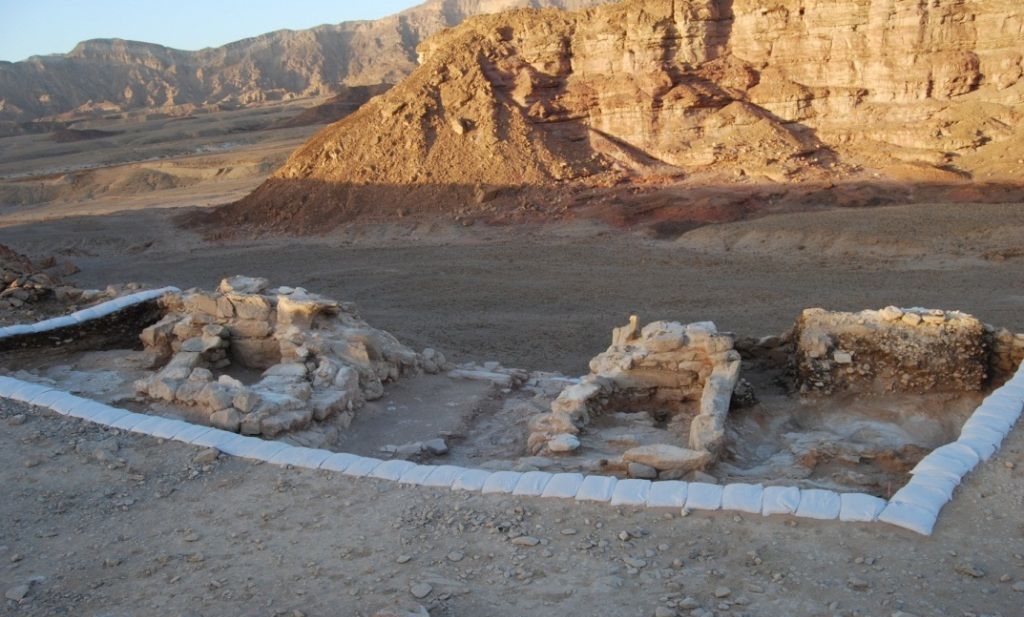
When we uncovered the stables, the dung and other materials were so well preserved and “fresh” that we could not believe it was actually 3,000 years old. Only when the dates came back from the lab we were reassured that indeed these were the remains of stables and other activities from the tenth century B.C.E.
According to precise pollen, seed, and fauna analyses, the animals were fed with hay and grape pomace — high-quality sustenance that must have been delivered from the Mediterranean region hundreds of miles away. This suggests special treatment and care, in accordance with the key role of the donkeys in copper production and in trade in a logistically challenging region: these animals were responsible for the constant supply of water (the nearest spring is more than 10 miles away), food, ore, and charcoal, as well as other commodities necessary for the production of copper, and were those who carried the copper ingots away to their final markets via trade.[9]
Food
We also analyzed remnants of the food eaten by the copper smelters 3,000 years ago, and found evidence of a rich and diverse diet. For instance, we discovered thousands of seeds from the biblical “Seven Species” at the site – the two grains (wheat and barley) and five fruits (dates, figs, grapes, pomegranates, and olives) mentioned together in Deut 8:8 as indigenous to Israel. Some of the seeds were subjected to radiocarbon dating, providing robust confirmation for the age of the site. This is the first time seeds from this period have been found uncharred and in such large quantities.
With the advancement of modern science, we now enjoy research options that were unthinkable a few decades ago. We can reconstruct wine typical of the early 10th century, according to the Bible, the era of King David, and can understand the cultivation and domestication processes that have been preserved in the DNA of the seeds.[10] Food does not grow in the Timna Valley desert, and the appearance here of fruit, hardly a basic necessity, is evidence of expensive imports.
In addition to grains and fruit, someone took great care to give the people working at the furnaces the best of everything. Remains of animal bones indicate that the copper smelters were given the better cuts of meat — the meatiest parts of the animals. They also enjoyed fish that were brought from the Mediterranean hundreds of miles away.[11] This was not the diet of slaves but of highly-regarded, even venerated, skilled craftsmen, who enjoyed high social status.[12]
While it is likely that these craftsmen were aided by apprentices of a lower social status, ethnographic evidence of metal smelting supports the notion that slaves or forced laborers were not used in the unique, typically segregated, task of creating the new and precious substance (in contrast – as mentioned above – to the workers at the mines).
Human Remains
Burials are rare in Timna and very few human remains were uncovered in the region. We recently discovered remains of several individuals, including a pregnant woman, in a stone-built tumulus located in front of the Hathor Temple. Although research is only in its infancy, the discovery of a woman is important in itself, as until now, it has been commonly assumed that women and children did not participate in the arduous journeys to the valley.
In the same grave we also found a number of important persons who were buried with embellished textiles and other grave goods. The study of these finds should yield interesting insights on the people organizing the mining operation, their origin and their role in society.[13]
Textiles
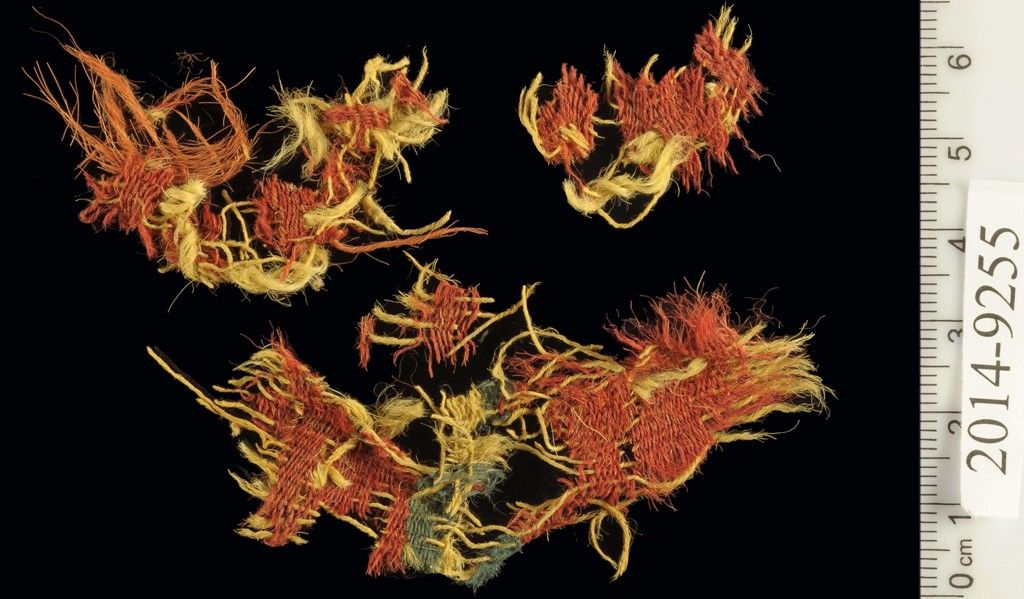 Materials used to weave the textiles included wool, linen, and goat hair, and range from coarse and rough tent remains to very delicate and colorful clothing. These beautiful masterpieces of weaving and dyeing—the earliest evidence of industrial dyeing in the Levant, of wash-resistant color on textile—support the idea of a strong, hierarchical society in Timna.[14] It is apparent that there was a dominant elite in this society that took pains to dress according to their class, and had the means to engage in long-distance trade to transport these textiles—and other materials and resources—to the desert.
Materials used to weave the textiles included wool, linen, and goat hair, and range from coarse and rough tent remains to very delicate and colorful clothing. These beautiful masterpieces of weaving and dyeing—the earliest evidence of industrial dyeing in the Levant, of wash-resistant color on textile—support the idea of a strong, hierarchical society in Timna.[14] It is apparent that there was a dominant elite in this society that took pains to dress according to their class, and had the means to engage in long-distance trade to transport these textiles—and other materials and resources—to the desert.
Venerated Smelters
Mining was a simple task performed under severe conditions,[15] but the act of smelting, turning stone into metal, required an enormous amount of skill. The smelter had to build a furnace out of clay in precise dimensions, provide the right amount of oxygen and charcoal, maintain a 1,200-degree (Celsius) heat, connect bellow pipes, blow air at a fixed rate, and add an exact mixture of minerals. All told, the smelter had to manage some 30-40 variables in order to produce the coveted copper ingots.
This knowledge was so advanced for the time it may have been considered magical or supernatural. This fits well with our knowledge about traditional metal smelters (today the evidence is mostly related to iron), who have a very special role in society. Consequently, we now understand that Glueck misunderstood the purpose of the wall around the hilltop: it was not designed to hold slaves or forced laborers in, but rather to protect the metal workers by keeping hostile raiders out.
Slaves’ Hill and the other smelting camps were primarily industrial sites. In time of peace the smelters and the rest of the population dwelled in tents in the valleys below; the non-residential quality of these sites is demonstrated clearly in the pottery assemblage, which is distinct from domestic contexts.[16]
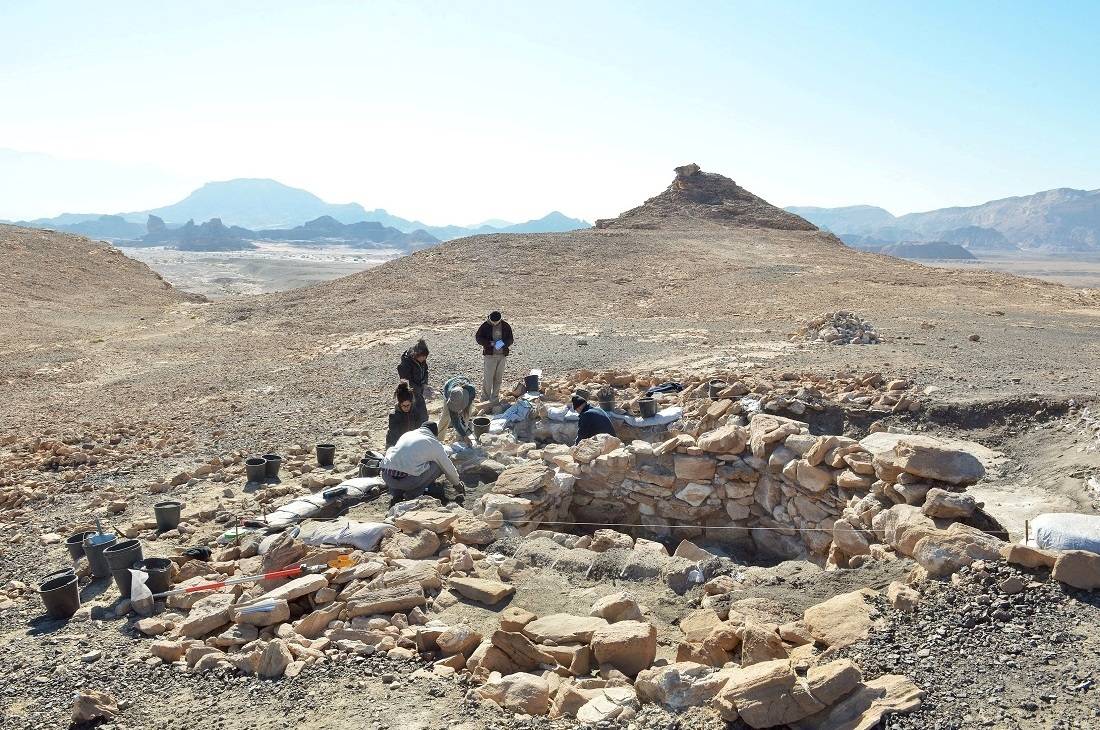
Early Iron Age Edom and Possible Israelite Domination
The mines were an Edomite operation, and they prove conclusively that Edom was an organized polity already in the Iron I. The early Iron Age, namely the 12th – 10th centuries B.C.E., was a formative period, with local kingdoms emerging and replacing Egyptian hegemony in Canaan.[17] Until recently, many archaeologists claimed that Edom did not emerge as a polity until after this period, but the excavations at Timna and Faynan belie this notion. Not only was the region inhabited, as suggested by the biblical story (see below), but control of this area must have been a key element in the economic prosperity of the southern Levant.
According to Samuel, Edom was subjected to Jerusalem following King David’s conquests:
שמואל ב ח:יג וַיַּעַשׂ דָּוִד שֵׁם בְּשֻׁבוֹ מֵהַכּוֹתוֹ אֶת אֲרָם [תה”ש אדום] בְּגֵיא מֶלַח שְׁמוֹנָה עָשָׂר אָלֶף.ח:יד וַיָּשֶׂם בֶּאֱדוֹם נְצִבִים בְּכָל אֱדוֹם שָׂם נְצִבִים וַיְהִי כָל אֱדוֹם עֲבָדִים לְדָוִד…
2 Sam 8:13 David gained fame when he returned from defeating Aram [LXX: Edom][18] in the Valley of Salt, 18000 in all. 8:14 He stationed garrisons in Edom – he stationed garrisons in all of Edom – and all the Edomites became vassals of David ...
Moreover, to explain how Hadad the Edomite became a bitter enemy to King Solomon all his days (1 Kings 11:14-25), the book of Kings describes David’s brutal conquest and domination of Edom:
מלכים א יא:טו וַיְהִי בִּהְיוֹת דָּוִד אֶת אֱדוֹם בַּעֲלוֹת יוֹאָב שַׂר הַצָּבָא לְקַבֵּר אֶת הַחֲלָלִים וַיַּךְ כָּל זָכָר בֶּאֱדוֹם.יא:טז כִּי שֵׁשֶׁת חֳדָשִׁים יָשַׁב שָׁם יוֹאָב וְכָל יִשְׂרָאֵל עַד הִכְרִית כָּל זָכָר בֶּאֱדוֹם.
1 Kings 11:15 When David was in Edom, Joab the army commander went up to bury the slain, and he killed every male in Edom; 11:16 for Joab and all Israel stayed there for six months until he had killed off every male in Edom.
In short, according to the Bible, Edom was dominated by Israel during the reigns of David and Solomon. As stated above, the results of our recent work in Timna, coupled with those of the expedition of Tom Levy and Mohammad Najjar in Wadi Faynan, provide a possible archaeological background for the biblical account of an Edom dominated by Israel. We now understand what would have been at stake for David in this remote region: copper.
The flourishing copper trade undoubtedly contributed to the economy of Edom’s neighbors, if merely by trade engagement: The quantities of the copper produced in the Aravah were much beyond local consumption, with new evidence demonstrating that distant places such as Egypt and Greece were important markets for this copper during the early Iron Age.[19]
Direct evidence of Israelite domination is lacking in the archaeological record – except possibly 10th century B.C.E. four-room houses in Faynan believed by some to indicate Israelite tradition. Nevertheless, we should not necessarily expect to find any such evidence, even if this was an historical reality. Domination in the format of a military threat or a peace treaty that ensured Jerusalem’s share in the revenues from the lucrative metal industry would have been entirely invisible in the archaeological record.
Finally, in light of the new discoveries in the Aravah, the absence of any explicit biblical reference to Edomite copper is striking. One of the authors (E.B.-Y.) suggested recently that a deliberate editorial omission should be considered, given the sacred quality of the metal (cf., its use in the temples’ construction, 1 Kings 7) vis-à-vis the religious hatred towards Edom, as reflected in various texts (and in particular the later prophecies, cf., Book of Obadiah).[20]
Shishak, Camels, and the Copper Industry
Most of the sites in the Timna Valley and Wadi Faynan were deserted at the end of the 10th century B.C.E., following Pharaoh Shishak’s campaign (ca. 925 B.C.E.). The sites which continued to exist did so in a new and more efficient technology – including larger furnaces and other innovative metallurgical installations.
Efforts were made also to improve transportation; the dromedary (i.e. the one-humped camel) – the most suitable draft animal in desert regions – seems to have been introduced in this period to the Aravah copper trade and subsequently to the entire Levant.[21] Our finds from Timna thus support the view that the description of camels in the patriarchal narratives are anachronistic. Rather, camels were probably first domesticated in the Arabian Peninsula, which borders the Aravah Valley, in the late second or early first millennium B.C.E.[22]
Their use for transportation facilitated trade across vast desert areas, and propelled the long distance Arabian trade. The latter would become a main economic resource for the Edomites, after the copper industry ceased in the late 9th century B.C.E. The reason(s) for the end of the industry is not entirely clear; however, the rise of Cyprus as a dominant copper exporter, possibly with the aid of the Aramaeans,[23] must have been a major factor.[24]
TheTorah.com is a 501(c)(3) nonprofit organization.
We rely on the support of readers like you. Please support us.
Published
August 12, 2018
|
Last Updated
April 2, 2024
Previous in the Series
Next in the Series
Footnotes

Prof. Erez Ben-Yosef is Associate Professor in the Department of Archaeology and Ancient Near Eastern Cultures at Tel Aviv University and the Head of the Timna Valley Archaeological Expedition. He studied archaeology and geology at the Hebrew University of Jerusalem (B.A., B.Sc., M.Sc.) and archaeology and anthropology at the University of California, San Diego (M.A., Ph.D.). Ben-Yosef has authored multiple research papers on archaeometallurgy, archaeomagnetism, and Iron Age archaeology of the Southern Levant, and edited the recently published volume Mining for Ancient Copper: Essays in Memory of Beno Rothenberg (The Institute of Archaeology of Tel Aviv University and Eisenbrauns, 2018).

Dr. Aaron Greener is a post-doctoral fellow at the W.F. Albright Institute of Archaeological Research, and at the Zinman Institute of Archaeology at Haifa University. He holds a Ph.D. in archaeology from Bar-Ilan University. Greener directs “Dig the Past”, which recreates Israeli archaeological excavations at North American camps. He is currently preparing for publication the numerous figurine fragments discovered at the Temple Mount Sifting Project directed by Dr. Gabriel Barkay and Zachi Dvira.
Essays on Related Topics:





